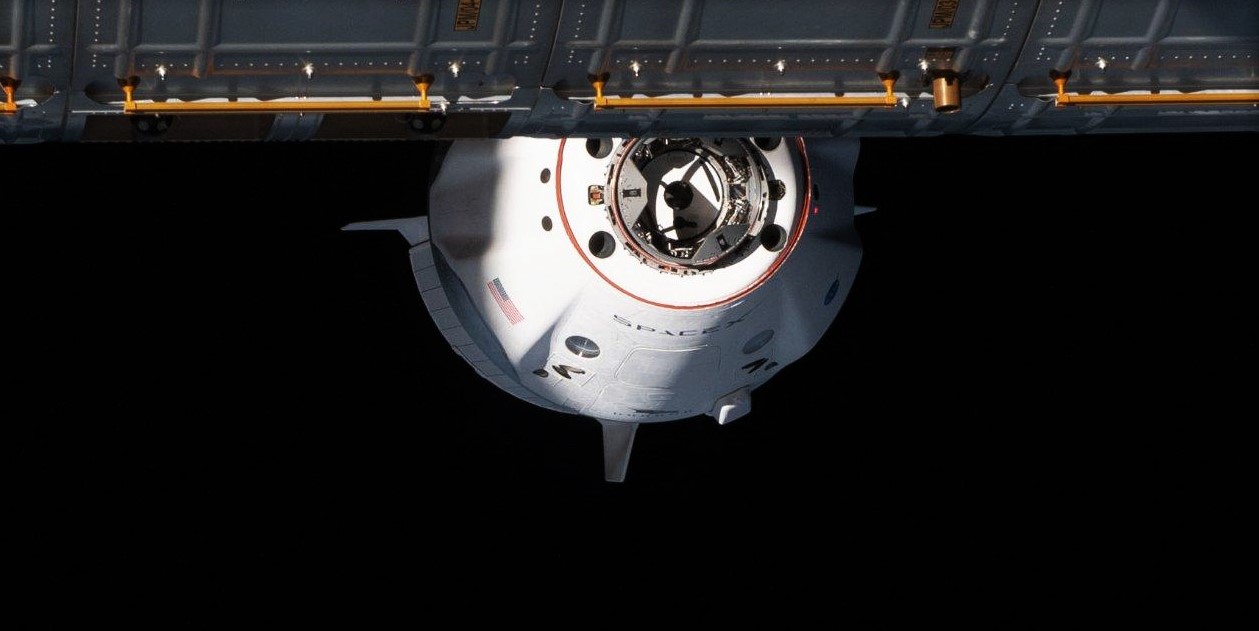

News
SpaceX Crew Dragon, four astronauts set for brief flight around the space station
To set the stage for another Dragon launch just a few weeks from now, NASA astronauts are preparing to board a SpaceX Crew Dragon for a brief flight around the International Space Station (ISS).
Orbiting roughly 400 km (250 mi) above the Earth’s surface, the ISS and its crew of seven international astronauts have just two docking ports available to manage a growing influx of SpaceX Crew and Cargo Dragon 2 spacecraft, as well as Boeing’s chronically delayed Starliner. While Starliner hasn’t flown since a near-catastrophic orbital debut in December 2019 and isn’t likely to reattempt that uncrewed flight test until the second half of 2021, SpaceX is in the exact opposite position as it prepares to sustain an unprecedented Dragon launch cadence.
One challenge of that cadence ramp – space station port logistics and availability – is now becoming clear as SpaceX nears its next Crew Dragon NASA astronaut launch.
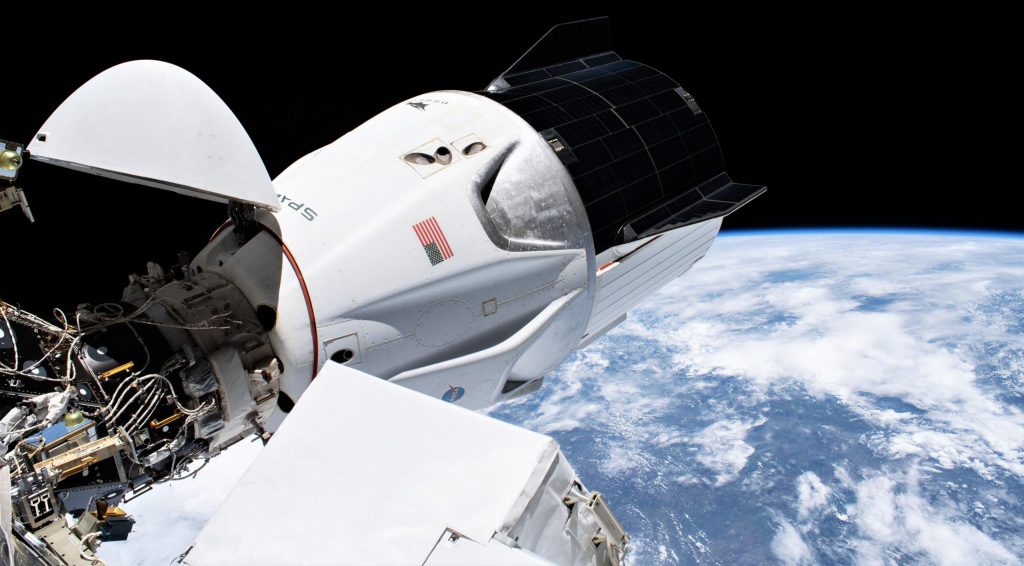
All launched on SpaceX Cargo Dragons, including a third destroyed during Falcon 9’s CRS-7 launch failure, the International Space Station has just two perpendicular International Docking Adapter (IDA) ports – one facing space and the other facing Earth. Regardless of CRS-7’s lost port, that IDA duo was always NASA’s plan.
The ISS requires the use of a huge, robotic arm (Canadarm2) to unload unpressurized cargo from spacecraft and that arm doesn’t have the mobility to access vehicles docked to the Earth-facing IDA port, meaning that cargo spacecraft with IDA ports can really only dock on the space-facing port. Cargo Dragon 2’s use of IDA docking and the Cygnus spacecraft’s use of berthing thankfully mean that neither NASA Commercial Resupply Services 2 (CRS2) vehicle is at risk of a traffic jam.
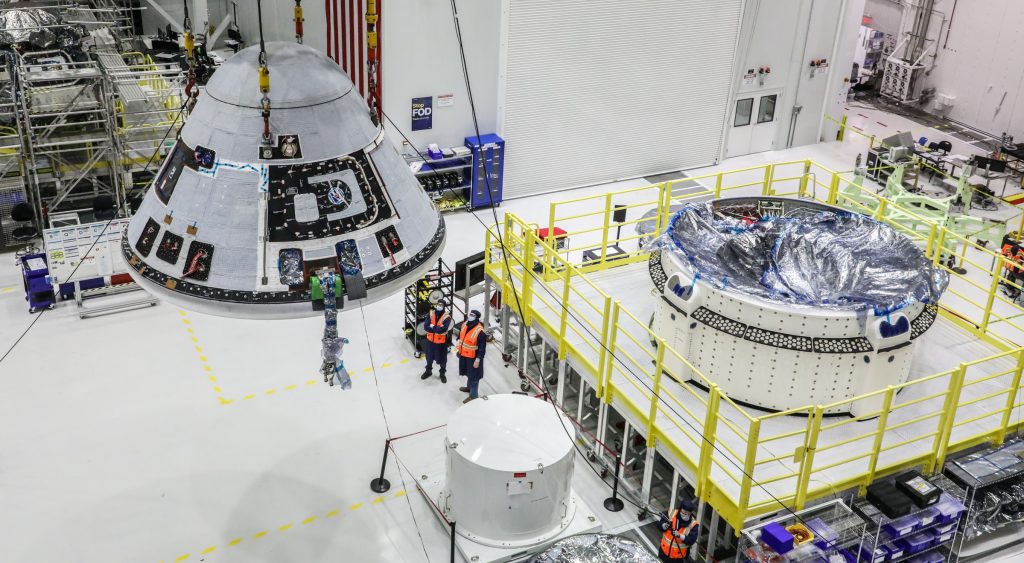
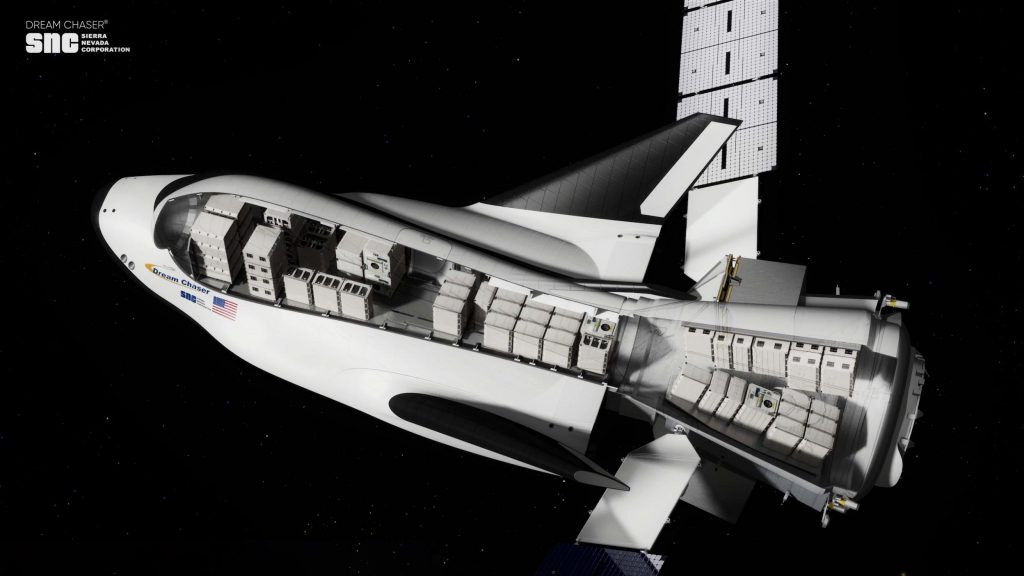
Sierra Nevada Corporation (SNC) is set to debut the cargo variant of its Dream Chaser spaceplane as early as 2022 for annual launches and will need to share that same lone IDA port with Cargo Dragon for its (approximately) annual resupply missions. More importantly, though, Crew Dragon and Boeing’s Starliner both require the use of one of those two IDA ports to deliver astronauts to and from the ISS. Both spacecraft are also expected to leave with the same crew that launched on them, meaning that both will spend a fully six or so months in orbit on each crew rotation mission.
In general, NASA also plans to overlap all Commercial Crew Program (CCP) astronaut launches, meaning that Crew Dragon will wait for Starliner to arrive (and vice versa) before departing the ISS with its four-astronaut crew. Those use-cases and safety requirements combine to create strict, complex scheduling challenges that mean a Cargo Dragon or Dream Chaser can never be docked to the ISS during a crew handover, while also adding significant constraints to any planned private astronaut (tourist) missions to the station – of which SpaceX already has at least one.
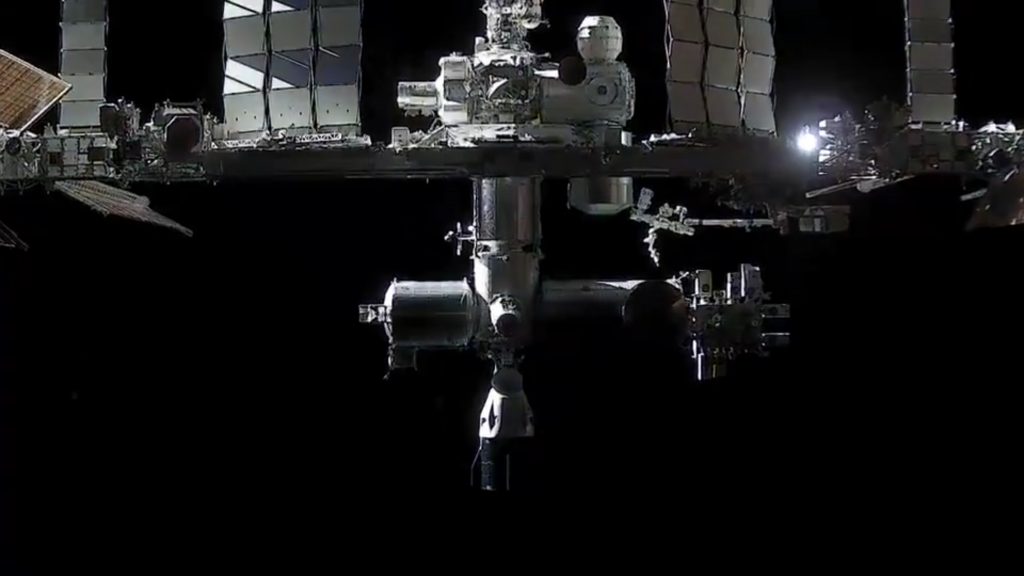
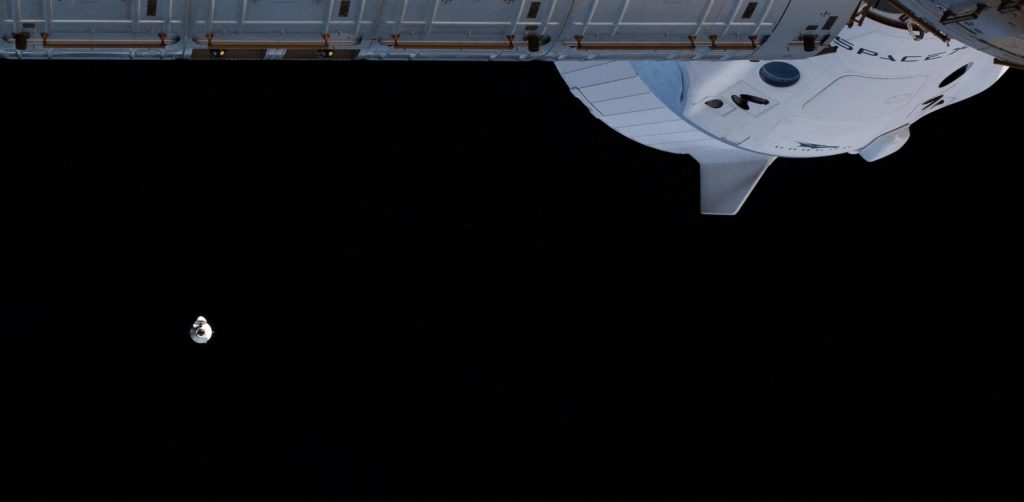
In the meantime, though Boeing’s Starliner is now at least 18 months behind SpaceX’s Crew Dragon on the path to launching NASA astronauts to and from the ISS, SpaceX is picking up the slack to the extent that station ‘traffic’ conditions are practically unaffected. Whereas NASA’s nominal plan was to alternate between its two redundant Commercial Crew providers before Boeing ran into huge delays, SpaceX is on track to launch Crew Dragon’s Crew-2 astronaut ferry mission as early as April 22nd.
The flight-proven Demo-2 Dragon will then rendezvous with the ISS while Crew-1’s Dragon and four astronauts are still aboard the station. Crew-1 and Crew-2 will spend about a week together before the former group boards their Dragon and heads for home. As few as six or so weeks later, SpaceX could launch its second Cargo Dragon 2 resupply mission, known as CRS-22. – This morning’s “port relocation,” which will see the Crew-1 Dragon will ‘relocate’ from the station’s Earth-facing IDA to its space-facing port, is thus necessary to free up that port for Cargo Dragon’s arrival when Crew-1 departs.
Barring major delays, SpaceX is currently on track to complete another two Crew and Cargo Dragon launches in 2-3 months, marking four Dragon missions in seven months if all goes to plan. Another three Dragon missions are firmly scheduled in 2021, potentially making for seven Dragon launches in 11-12 months if schedules hold. SpaceX’s current record – technically achieved twice in 2018 and 2019 – is five orbital Dragon missions in 12 months.
Tune in below around 6am EDT (UTC-4) to catch Crew Dragon C207’s brief 46-minute jaunt around the International Space Station (ISS) – a first for an American crewed spacecraft of any kind.
News
Tesla launches in India with Model Y, showing pricing will be biggest challenge
Tesla finally got its Model Y launched in India, but it will surely come at a price for consumers.

Tesla has officially launched in India following years of delays, as it brought its Model Y to the market for the first time on Tuesday.
However, the launch showed that pricing is going to be its biggest challenge. The all-electric Model Y is priced significantly higher than in other major markets in which Tesla operates.
On Tuesday, Tesla’s Model Y went up for sale for 59,89,000 rupees for the Rear-Wheel Drive configuration, while the Long Range Rear-Wheel Drive was priced at 67,89,000.
This equates to $69,686 for the RWD and $78,994 for the Long Range RWD, a substantial markup compared to what these cars sell for in the United States.
🚨 Here’s the difference in price for the Tesla Model Y in the U.S. compared to India.
🚨 59,89,000 is $69,686
🚨 67,89,000 is $78,994 pic.twitter.com/7EUzyWLcED— TESLARATI (@Teslarati) July 15, 2025
Deliveries are currently scheduled for the third quarter, and it will be interesting to see how many units they can sell in the market at this price point.
The price includes tariffs and additional fees that are applied by the Indian government, which has aimed to work with foreign automakers to come to terms on lower duties that increase vehicle cost.
Tesla Model Y seen testing under wraps in India ahead of launch
There is a chance that these duties will be removed, which would create a more stable and affordable pricing model for Tesla in the future. President Trump and Indian Prime Minister Narendra Modi continue to iron out those details.
Maharashtra Chief Minister Devendra Fadnavis said to reporters outside the company’s new outlet in the region (via Reuters):
“In the future, we wish to see R&D and manufacturing done in India, and I am sure at an appropriate stage, Tesla will think about it.”
It appears to be eerily similar to the same “game of chicken” Tesla played with Indian government officials for the past few years. Tesla has always wanted to enter India, but was unable to do so due to these import duties.
India wanted Tesla to commit to building a Gigafactory in the country, but Tesla wanted to test demand first.
It seems this could be that demand test, and the duties are going to have a significant impact on what demand will actually be.
Elon Musk
Tesla ups Robotaxi fare price to another comical figure with service area expansion
Tesla upped its fare price for a Robotaxi ride from $4.20 to, you guessed it, $6.90.

Tesla has upped its fare price for the Robotaxi platform in Austin for the first time since its launch on June 22. The increase came on the same day that Tesla expanded its Service Area for the Robotaxi ride-hailing service, offering rides to a broader portion of the city.
The price is up from $4.20, a figure that many Tesla fans will find amusing, considering CEO Elon Musk has used that number, as well as ’69,’ as a light-hearted attempt at comedy over the past several years.
Musk confirmed yesterday that Tesla would up the price per ride from that $4.20 point to $6.90. Are we really surprised that is what the company decided on, as the expansion of the Service Area also took effect on Monday?
But the price is now a princely $6.90, as foretold in the prophecy 😂
— Elon Musk (@elonmusk) July 14, 2025
The Service Area expansion was also somewhat of a joke too, especially considering the shape of the new region where the driverless service can travel.
I wrote yesterday about how it might be funny, but in reality, it is more of a message to competitors that Tesla can expand in Austin wherever it wants at any time.
Tesla’s Robotaxi expansion wasn’t a joke, it was a warning to competitors
It was only a matter of time before the Robotaxi platform would subject riders to a higher, flat fee for a ride. This is primarily due to two reasons: the size of the access program is increasing, and, more importantly, the service area is expanding in size.
Tesla has already surpassed Waymo in Austin in terms of its service area, which is roughly five square miles larger. Waymo launched driverless rides to the public back in March, while Tesla’s just became available to a small group in June. Tesla has already expanded it, allowing new members to hail a ride from a driverless Model Y nearly every day.
The Robotaxi app is also becoming more robust as Tesla is adding new features with updates. It has already been updated on two occasions, with the most recent improvements being rolled out yesterday.
Tesla updates Robotaxi app with several big changes, including wider service area
News
Tesla Model Y and Model 3 dominate U.S. EV sales despite headwinds
Tesla’s two mainstream vehicles accounted for more than 40% of all EVs sold in the United States in Q2 2025.

Tesla’s Model Y and Model 3 remained the top-selling electric vehicles in the U.S. during Q2 2025, even as the broader EV market dipped 6.3% year-over-year.
The Model Y logged 86,120 units sold, followed by the Model 3 at 48,803. This means that Tesla’s two mainstream vehicles accounted for 43% of all EVs sold in the United States during the second quarter, as per data from Cox Automotive.
Tesla leads amid tax credit uncertainty and a tough first half
Tesla’s performance in Q2 is notable given a series of hurdles earlier in the year. The company temporarily paused Model Y deliveries in Q1 as it transitioned to the production of the new Model Y, and its retail presence was hit by protests and vandalism tied to political backlash against CEO Elon Musk. The fallout carried into Q2, yet Tesla’s two mass-market vehicles still outsold the next eight EVs combined.
Q2 marked just the third-ever YoY decline in quarterly EV sales, totaling 310,839 units. Electric vehicle sales, however, were still up 4.9% from Q1 and reached a record 607,089 units in the first half of 2025. Analysts also expect a surge in Q3 as buyers rush to qualify for federal EV tax credits before they expire on October 1, Cox Automotive noted in a post.
Legacy rivals gain ground, but Tesla holds its commanding lead
General Motors more than doubled its EV volume in the first half of 2025, selling over 78,000 units and boosting its EV market share to 12.9%. Chevrolet became the second-best-selling EV brand, pushing GM past Ford and Hyundai. Tesla, however, still retained a commanding 44.7% electric vehicle market share despite a 12% drop in in Q2 revenue, following a decline of almost 9% in Q1.
Incentives reached record highs in Q2, averaging 14.8% of transaction prices, roughly $8,500 per vehicle. As government support winds down, the used EV market is also gaining momentum, with over 100,000 used EVs sold in Q2.
Q2 2025 Kelley Blue Book EV Sales Report by Simon Alvarez on Scribd
-

 News3 days ago
News3 days agoTesla debuts hands-free Grok AI with update 2025.26: What you need to know
-

 Elon Musk1 week ago
Elon Musk1 week agoElon Musk confirms Grok 4 launch on July 9 with livestream event
-

 Elon Musk5 days ago
Elon Musk5 days agoxAI launches Grok 4 with new $300/month SuperGrok Heavy subscription
-

 News2 weeks ago
News2 weeks agoTesla Model 3 ranks as the safest new car in Europe for 2025, per Euro NCAP tests
-

 Elon Musk2 weeks ago
Elon Musk2 weeks agoxAI’s Memphis data center receives air permit despite community criticism
-

 News5 days ago
News5 days agoTesla begins Robotaxi certification push in Arizona: report
-

 Elon Musk2 weeks ago
Elon Musk2 weeks agoTesla reveals it is using AI to make factories more sustainable: here’s how
-

 Elon Musk2 weeks ago
Elon Musk2 weeks agoTesla scrambles after Musk sidekick exit, CEO takes over sales
















